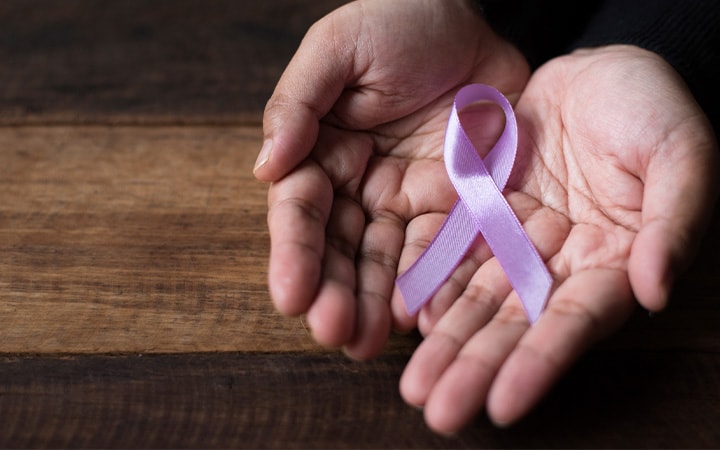Awareness Is Key to Detecting Testicular Cancer
April 27, 2023

Testicular cancer is the most common cancer in men ages 18 to 35, though it can develop at any age. And chances are, your doctor isn’t screening for it during a routine physical exam.
“The only screening for testicular cancer is self-examination,” says UH urological oncology specialist Adam Calaway, MD. “It’s really on the patient to look for abnormalities.”
Fortunately, testicular cancer is very treatable. With proper treatment, the overall survival rate exceeds 90 percent, even taking into account advanced cases. “The cure rate is almost 100 percent when the disease is in the testicle only and hasn’t spread,” Dr. Calaway says. “Even when it spreads beyond the testicle, it remains highly curable with chemotherapy, radiation or more advanced surgeries.”
Risk Factors for Testicular Cancer
Testicular cancer usually begins in the germ cells that make sperm. Most cancers are found at an early stage before they have spread. Nonseminomas usually occur in younger men, grow more quickly and are more likely to spread to lymph nodes or other areas. Seminomas tend to occur in older men, are slow growing and more likely to be localized to the testicle.
Risk factors for testicular cancer include:
- An undescended testicle – one or both testicles fail to descend from the abdomen to the scrotum before birth.
- Family history of testicular cancer.
- Previous personal history of testicular cancer.
- Race – White men have a 4 to 5 times higher risk than Black or Asian men.
How to Do a Self-Exam
Dr. Calaway recommends that men do a simple self-exam once a month.
- Do the exam during or after a warm bath or shower, which will relax the skin and muscles of the scrotum.
- Separately, roll each testicle gently between your thumb and fingers to feel for any lumps or changes in size or shape. “You’re looking for an abnormality in the testicle. You’re feeling for something hard and firm,” Dr. Calaway says.
- Cancerous lumps usually are painless. But some men may feel pain or discomfort in the scrotum, groin or lower abdomen or swelling of the testicles or scrotum.
- If you feel anything unusual, see your doctor. Most lumps and swelling are benign, but may require treatment.
Keep in mind, it’s normal for one testicle to be slightly larger or to hang lower than the other. Also, a small, coiled tube called the epididymis attached to the testicles may feel like a small mass, but it’s a normal part of the anatomy.
Treatment & Fertility Concerns
If a mass is found, ultrasound imaging and blood tests will determine if it’s cancerous. If imaging tests show the cancer has not spread beyond the testicle, a surgeon will remove the testicle. No further treatment is usually necessary besides close surveillance. In cases where the cancer has spread, chemotherapy, surgery or radiation therapy may be advised.
Men generally continue to produce sufficient sperm with one testicle. But because testicular cancer and treatment can affect fertility, men who have concerns can talk to their doctor about freezing sperm for future use, Dr. Calaway says.
Related Links
With a multidisciplinary approach to patient care, the Urology Institute customizes treatment plans with the latest minimally invasive state-of-the-art technology and techniques. Learn more.


